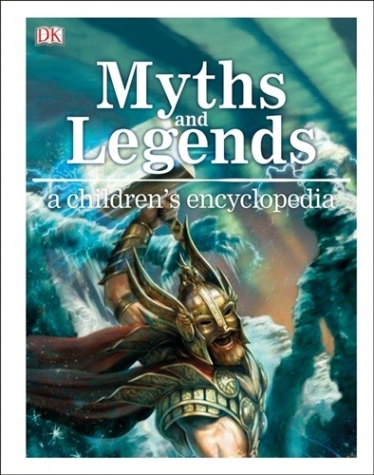South Asia, a region rich in cultural diversity and history, has long been a cradle for captivating legends and myths. These narratives, passed down through generations, not only entertain but also offer insights into the values, beliefs, and societal structures of the communities they originate from. In this exploration, we delve into some of the most enduring South Asian legends and examine their relevance in today's world.
The Tale of Kannagi: A Symbol of Justice and Feminine Strength
Originating from the Tamil epic Cilappatikāram, Kannagi's story is one of unwavering devotion and righteous fury. After her husband, Kovalan, is unjustly executed for a crime he didn't commit, Kannagi confronts the king, proving her husband's innocence. In her anguish, she curses the city of Madurai, leading to its destruction.
In contemporary times, Kannagi stands as a symbol of justice and feminine strength. Her tale resonates with modern movements advocating for women's rights and justice, emphasizing the power of truth and resilience.
The Churel: Exploring Gender and Societal Norms
The Churel, a spirit from South Asian folklore, is believed to be the ghost of a woman who died under tragic circumstances. Often depicted with backward feet and a terrifying appearance, she is said to lure men and drain their vitality.
This legend reflects societal attitudes towards women, especially those who defy traditional norms. In modern interpretations, the Churel can be seen as a manifestation of suppressed female rage and a critique of patriarchal structures.
The Ramayana and Mahabharata: Epics Shaping Cultural Identity
The Ramayana and Mahabharata are monumental epics that have profoundly influenced South Asian culture. Their narratives encompass themes of duty, righteousness, and the complexities of human nature.
Today, these epics continue to shape cultural identity, with their stories being retold in various forms, from television series to contemporary literature. They offer timeless lessons and continue to inspire discussions on ethics, leadership, and morality.
The Legend of Sohni Mahiwal: Love Transcending Boundaries
The tragic love story of Sohni and Mahiwal, originating from Punjab, tells of a potter's daughter who falls in love with a trader. Their clandestine meetings across the river ultimately lead to their demise.
This tale underscores the challenges of forbidden love and societal constraints. In today's context, it highlights the enduring struggle for personal freedom and the right to love beyond societal boundaries.
. The Naga Legends: Guardians of Nature
Nagas, serpent deities in Hindu and Buddhist traditions, are revered as protectors of water bodies and guardians of the natural world. They symbolize fertility, prosperity, and the interconnectedness of life.
In an era of environmental concerns, Naga legends emphasize the importance of respecting and preserving nature. They serve as reminders of humanity's responsibility towards ecological balance and sustainability.
. The Story of Mirabai: Devotion Beyond Conventions
Mirabai, a 16th-century poet and devotee of Lord Krishna, defied societal norms by renouncing royal life to pursue spiritual devotion. Her bhajans (devotional songs) express deep love and surrender to the divine.
Mirabai's life challenges traditional roles assigned to women and emphasizes the pursuit of personal spiritual paths. Her legacy continues to inspire those seeking authenticity and spiritual freedom.
The Folklore of Bhoot and Preta: Understanding the Afterlife
Beliefs in spirits like Bhoot and Preta reflect South Asian perspectives on death and the afterlife. These entities are often souls of those who met untimely deaths or had unfulfilled desires.
Such folklore addresses human fears and the need for rituals to ensure peace for the departed. They offer insights into cultural practices surrounding death and the importance of ancestral remembrance.
The Legend of Rani Durgavati: Valor and Resistance
Rani Durgavati, a 16th-century queen of Gondwana, is celebrated for her bravery in defending her kingdom against Mughal invasion. Choosing death over surrender, she became a symbol of resistance and courage.
Her story inspires discussions on leadership, patriotism, and the role of women in warfare. Rani Durgavati's legacy is a testament to the indomitable spirit of resistance against oppression.
The Myth of the Chudail: Navigating Fear and Misogyny
The Chudail, similar to the Churel, is a female spirit believed to haunt specific areas, often associated with vengeance against male wrongdoers. Her depiction varies, but she is commonly portrayed as a beautiful woman with a hidden monstrous form.
This myth reflects societal fears of female autonomy and the consequences of mistreating women. Modern interpretations view the Chudail as a symbol of repressed female anger and a critique of misogynistic attitudes.
The Influence of South Asian Myths in Contemporary Media
South Asian myths and legends continue to influence contemporary media, from literature and cinema to television and digital platforms. Stories like those of the Churel and Kannagi are reimagined to address current social issues, blending traditional narratives with modern themes.
This fusion allows for a re-examination of cultural values and provides a platform for marginalized voices. It also fosters a deeper understanding of the region's rich heritage and its relevance in today's world.
- FAQs
Why does SouthAsian Chronicle focus on legends and myths in modern storytelling?
At SouthAsian Chronicle, we believe that legends and myths are more than just old stories — they are the cultural DNA of societies. These narratives reflect timeless human emotions and ethical dilemmas that remain relevant across generations. By exploring them, especially through a modern lens, SouthAsian Chronicle aims to bridge the gap between past and present, offering readers not only historical knowledge but also new perspectives on today's social and cultural realities.
How do South Asian legends influence contemporary media and social values?
South Asian legends continue to inspire modern literature, films, web series, and art because they explore universal themes like justice, love, power, sacrifice, and human flaws. Today, filmmakers and writers often reinterpret these stories to address contemporary issues such as gender equality, climate change, political conflict, and personal freedom. SouthAsian Chronicle highlights these connections to show how traditional narratives still shape — and challenge — modern worldviews.
Comments on “SouthAsian Chronicle Presents: Legends, Myths & Modern Realities”